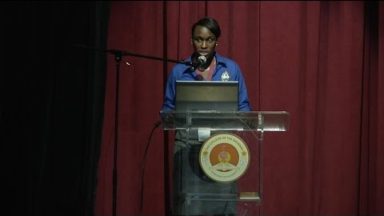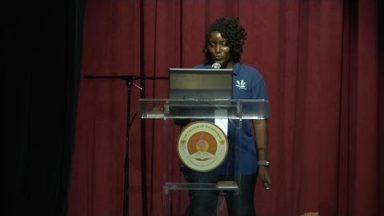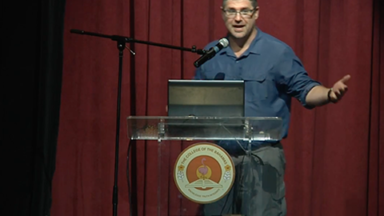Understanding population structure of endangered Nassau grouper (Epinephelus striatus) for supporting their conservation in The Bahamas
Presented by Krista D. Sherman
Krista D. Sherman, Kristine L. Stump, Craig P. Dahlgren, R. Andrew King, Jamie R. Stevens, Steve D. Simpson, and Charles R. Tyler
Effective fisheries management requires a sound understanding of the reproductive biology, source-sink dynamics and genetic population structure of harvested species. The Nassau grouper (Epinephelus striatus) fishery in The Bahamas has declined by up to 86% in the last two decades and has included the collapse of populations at several major spawning aggregation sites. Previous research suggests that Bahamian populations of Nassau grouper may be genetically distinct compared with Caribbean populations. However, no studies have comprehensively assessed the status of Nassau grouper spawning stocks throughout The Bahamas and little is known about the genetic structure of grouper populations in this area. We used 15 polymorphic microsatellite loci to investigate: 1) population structure, diversity and connectivity of Nassau grouper throughout the Bahamian archipelago; and 2) fine-scale patterns of genetic variation within two historical Nassau grouper spawning aggregations around Long Island and Andros, Bahamas. Fin clips were collected from 77 Nassau grouper during August 2014 – September 2015 on research cruises. Genomic DNA for microsatellite analysis was extracted from fin clip tissues using the HotSHOT method and its quality assessed via spectrophotometry. PCR amplification was performed using a BIO-RAD Thermal Cycler in a total of three multiplexes and PCR products were visualized with a Beckman Coulter sequencer. Polymorphic microsatellite loci were assessed and corrected for the presence of null alleles, linkage disequilibrium and compliance to Hardy-Weinberg equilibrium. Genetic diversity statistics including allelic richness and heterozygosity, and genetic differentiation between spawning aggregations (e.g. AMOVA and Fst) were calculated using GENALEX. The program STRUCTURE was used to analyse genetic population structure of Nassau grouper. We report preliminary results from DNA microsatellite analysis of the fish genotyped informing on population structure and connectivity in The Bahamas. Findings from this research will be combined with acoustic telemetry and spawning aggregation survey data to inform and support sustainable and adaptive management of the Bahamian Nassau grouper fishery.







Recent Comments